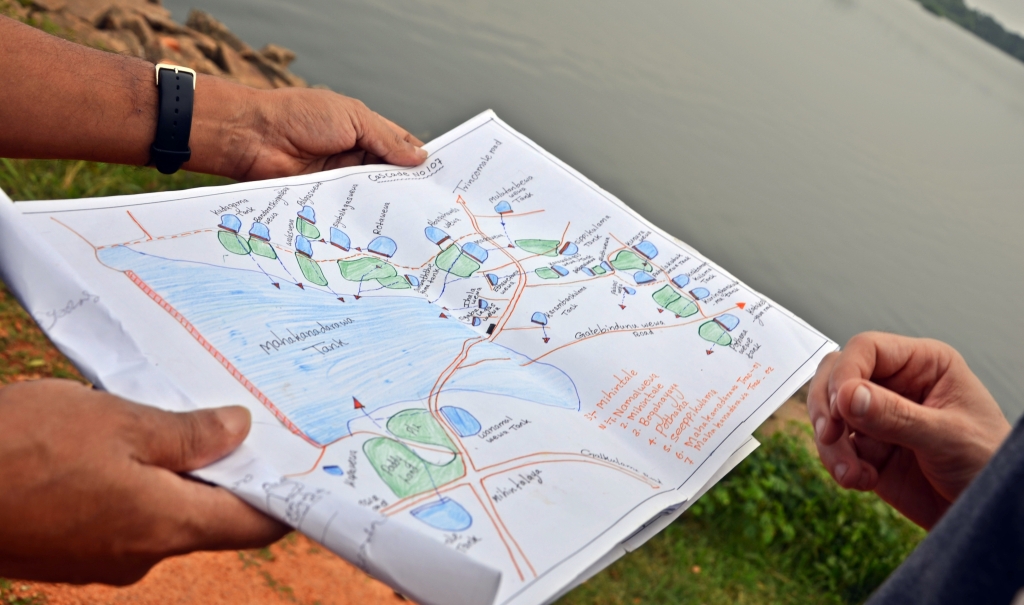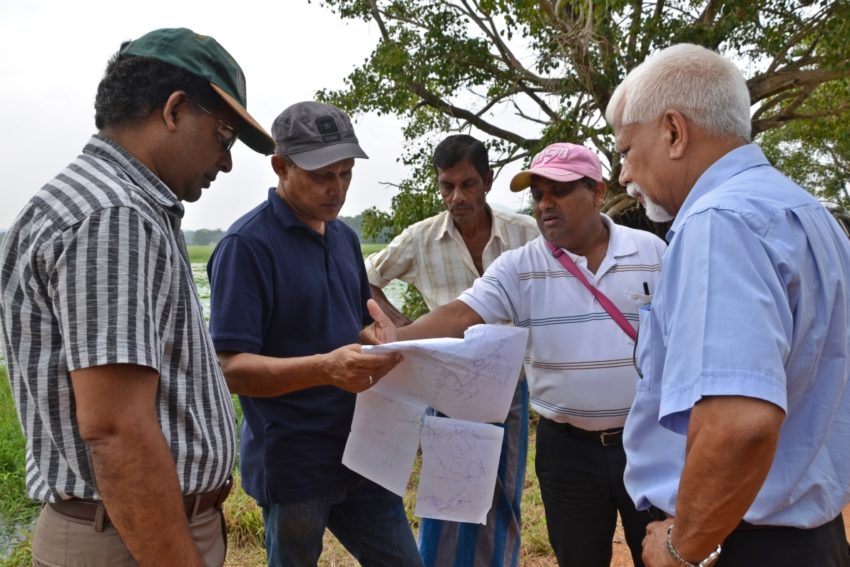A small-reservoir revival in Sri Lanka’s Dry Zone
By Samurdhi Ranasinghe, Communications Officer, IWMI
In 2017, Sri Lanka experienced one of its worst droughts in over four decades. This was the culmination of five consecutive years of dry weather during the country’s main crop production season. Drought hit the northern Dry Zone especially hard, causing significant reductions in the production of rice, a central pillar of national food security.

In one effort to counter this climate calamity, researchers with the International Water Management Institute (IWMI) have joined a major initiative to rehabilitate “tank” (or small reservoir) cascade systems in the Dry Zone. Involving extensive fieldwork, IWMI’s research forms part of a large-scale project aimed at strengthening the resilience of smallholder farming in the face of extreme weather events, which are expected to occur more frequently as a result of climate change.
Sri Lanka’s tank cascade systems are rooted in an ancient hydraulic civilization dating back many hundreds of years. Successive kings built extensive networks of tanks and reservoirs connected by natural streams, through which runoff from the upper tanks flows into the lower ones. Though often not well maintained, these systems continue to play a vital role in the everyday lives of rural people across the Dry Zone. Apart from serving as the main water source for irrigation, they supply water for fishing, washing and bathing as well as for the surrounding flora and fauna. Proper functioning of the tank cascade systems and maintenance of their storage capacity are vital to offset increasingly frequent dry spells in the region. It is feasible to restore all functions of these tanks with minimum resources through meticulous planning, based on an integrated approach.
“Apart from functioning as an irrigation tank for ‘a patch of paddy’ land below it, these small reservoirs play significant social, cultural, economic and environmental roles in the lives of rural communities,” said Herath Manthrithilake, who heads IWMI’s Sri Lanka Development Initiative. “Therefore, any intervention has to be done with the utmost care, based on a deep understandings of those roles. Since, the tanks are hydraulically linked with one another, it is important to take into account water availability and distribution within the whole cascade system.”
IWMI researchers have embarked on the development of a practical guide and framework to prioritize tank cascade systems for restoration. This will be done based on data collected in the Malwathy Oya basin, which encompasses a large number of cascades. During the project’s first 2 years, IWMI has collected primary and secondary data, and carried out field verifications to help determine priorities and define criteria to select cascades for rehabilitation.
“We don’t have the technical capacity and finances to rehabilitate this tank,” said R. Kapuruhami, head of the farmer’s association at Selesthimaduwa in Anuradhapura District, North Central Province. “We need to have a permanent water supply, especially during the dry season. We do not have other sources of water, and there is no other way to cultivate our land. Because of this, our children are migrating to look for more stable jobs.”
Kapuruhami’s concerns echo those of many farmers in the region, whom IWMI researchers have interviewed during their field visits. A well-managed tank cascade system would enable more of these farmers to grow crops during the dry season. For this purpose, the project will upgrade selected tank cascade systems, in the hope of empowering smallholder farmers to adopt more climate-resilient farming practices and improve access to safe drinking water. The GCF project’s ultimate goal is to strengthen food, livelihood and water security through improved irrigation practices and drinking water management in the three river basins.

A hand drawn map of one of the tank cascade systems in the Malwathu Oya River Basin.
Photo: Samurdhi Ranasinghe / IWMI







